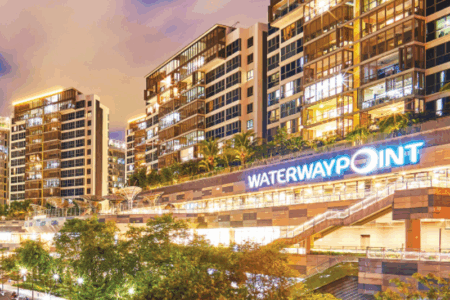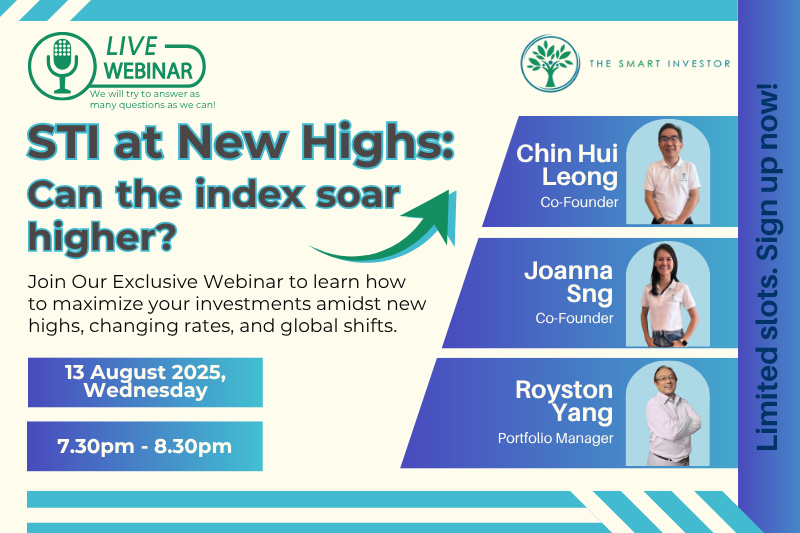All the REITs have reported their latest financial numbers and business updates during the recent earnings season.
Income investors may be curious to see which REITs are resilient and doing well, and which are still struggling.
In particular, investors are turning their attention towards the stable of Mapletree REITs to determine how they are coping with the headwinds of high interest rates and inflation.
We compare two popular REITs – Mapletree Logistics Trust (SGX: M44U), or MLT, and Mapletree Pan Asia Commercial Trust (SGX: N2IU), or MPACT.
Read on to find out which constitutes the more attractive buy.
Portfolio composition
First, let’s look at the portfolio breakdown for each of these Mapletree REITs.
MLT’s portfolio is more diversified by far when compared with MPACT’s.
The logistics REIT owns 178 properties that are spread across eight countries, while MPACT only has 15 properties in half the number of countries (i.e. four).
However, MPACT’s assets under management (AUM) ended up being higher than MLT’s because the retail and commercial REIT owns office properties, which are valued higher than each industrial property.
The advantage of having a bigger AUM is that it opens the REIT up to larger deals that can help to grow the REIT’s portfolio and distribution per unit (DPU).
MLT still wins by having a more diverse portfolio, as the contribution of each property to its gross revenue and net property income (NPI) should be lower than MPACT.
Winner: MLT
Financials and DPU
Next, we look at the latest financial performance of each REIT.
Both MLT and MPACT reported a downbeat set of results as persistent headwinds, such as foreign currency weakness and China’s downturn, led to year-on-year declines in gross revenue, NPI, and DPU.
MLT’s performance, however, fared worse than MPACT as its DPU fell by double-digits, and the percentage drop was significantly higher than that of revenue and NPI.
MPACT, on the other hand, used some of the proceeds from the sale of Mapletree Anson to pare down its debt load.
This move helped the REIT to reduce its finance costs, resulting in a gentler year-on-year decline in its DPU.
Winner: MPACT
Debt metrics
Moving on to debt metrics, MLT has a higher gearing ratio compared with MPACT.
The logistics REIT, however, sported a lower cost of debt and also had a larger proportion of its debt pegged to fixed rates.
Around 6% of MLT’s loans come due in fiscal 2026 (FY2026), similar to MPACT.
However, 13% of MLT’s debt comes due in FY2027, whereas for MPACT, this number was slightly lower at 9%.
Overall, we still prefer MLT for its lower cost of debt and higher proportion of fixed-rate loans.
We feel that this attribute is important in an environment where interest rates may stay “higher for longer”.
Winner: MLT
Operating metrics
For operating metrics, MLT has a higher occupancy rate of 95.7% as MPACT’s portfolio is plagued by lower occupancies at its office properties.
MLT also has the advantage of having a slightly longer weighted average lease expiry (WALE).
The rental reversion rate for MLT was also slightly better than MPACT, as the latter saw a drag from its China and Japanese properties.
Winner: MLT
Distribution yield
Finally, we come to arguably the most important metric for income investors – each REIT’s distribution yield.
MLT’s annualised distribution yield is slightly higher than MPACT at 6.3%.
However, yield should not be looked at in isolation.
Investors should note that MLT saw a larger year-on-year decline in its DPU, which could be the reason why its units are trading at a higher distribution yield.
MPACT is not without its problems, but the REIT seems to have arrested the year-on-year decline in its DPU for now.
Winner: MLT
Get Smart: Capital recycling
Using this simple system (above), MLT ticks four out of five boxes.
However, investors should consider other factors, too.
Capital recycling is one of these factors as REITs actively manage their portfolios during tough times.
MLT recently completed a redevelopment project at 5A Joo Koon Circle with a significant increase in gross floor area.
The property enjoys 60% committed occupancy with another 25% under active negotiation.
Since the start of FY2026, MLT has divested four properties and is on track to divest more.
MPACT is also not sitting still.
The REIT recently divested two Japanese office buildings to uplift its portfolio quality, and is also working on an asset enhancement initiative for its VivoCity mall.
Investors need to weigh the pros and cons of each REIT in deciding which is more suitable for their portfolios.
Which SGX companies will reach S$100 billion next? Our latest FREE report provides detailed financial analysis and growth prospects of 5 potential candidates. The results? Surprising. You’ll want to grab a copy now and see whether what everyone else says is true. Click here to download now.
Follow us on Facebook, Instagram and Telegram for the latest investing news and analyses!
Disclosure: Royston Yang does not own shares in any of the companies mentioned.





